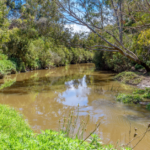Murder Trial Underway Over Alleged Mushroom Poisonings

A woman is currently facing a jury trial over allegations that she caused the deaths of three guests and attempted to cause the death another by way of poisoning.
The defendant, 50-year old Erin Patterson, is on trial in the Supreme Court of Victoria for allegedly serving her estranged husband’s 70-year old mother Gail and father Don Wilkinson of the same age, as well as Gail’s 66-year old sister Heather and her 71-year old husband Ian, with beef wellington containing poisonous ‘death cap mushrooms’ at the defendant’s home on Lengatha, a small town nearly 150 kilometres south of Melbourne, on 29 July 2023.
All except Ian – who recovered after weeks of hospital treatment – died after consuming the dish.
Ms Patterson is facing three charges of murder and one charge of attempted murder.
She has pleaded not guilty to all of the charges and is entitled to be presumed innocent until and unless the prosecution is able to prove her guilt beyond a reasonable doubt.
Supreme Court trial underway
The trial commenced with the prosecution’s opening statement, which foreshadowed evidence that the defendant invited her estranged husband Simon and the said four relatives for a “special meal” to discuss her “medical issues”.
All except her estranged husband, who “felt uncomfortable” about the invitation attended.
According the prosecution, the defendant told her guests during the meal that she had been diagnosed with cancer – which was the prosecution asserts was untrue.
It is alleged that some time before the lunch, Ms Patterson travelled to nearby Loch and Outtrim, which are said to be known for having death cap mushrooms, as well as to an Asian grocery store where she is said to have purchased dried mushrooms. She is also alleged to have then posted online about using a food dehydrator to cook mushrooms, and that she had been “hiding powdered mushrooms in everything”
The prosecution asserts that Ms Patterson knowingly served her guests with individual portions of beef wellington laced with death cap mushrooms on grey plates, while she ate off a smaller orange plate.
All of the guests became violently ill shortly after the meal, with three later passing away in hospital as a result of poisoning.
The prosecution says testing of the defendant’s food dehydrator revealed traces of death cap mushrooms as well as her fingerprints.
In its opening, Ms Patterson’s criminal defence lawyer described the incident as a ‘terrible accident’ and that the defendant never intended to harm anyone.
To achieve convictions, the prosecution will need to prove that the defendant’s actions caused the three deaths and serious injury, as well as that she intended to kill or cause serious harm.
Poisonings in Australia
Accidental poisonings are certainly not uncommon in Australia.
In fact, statistics suggest that between 2022 and 2023, there were nearly 9,000 hospitalisations due to accidental poisonings across the nation, accounting for 1.6% of all injury hospitalisations.
And between 2021 and 2022, there were 1,567 deaths from accidental poisonings which accounted for more than 10% of all injury deaths. The main types of accidental poisoning include organic solvents, vapours, pesticides, alcohol, biological substances, opioids, hallucinogens, sedatives, non-opioid analgesics, and narcotics.
Despite the number of accidental poisonings decreasing from 45.4 persons per 100,000 in 2015-2016 to just 33.4 in 2022, the data might not reflect the trends worldwide. The total mortality rate from accidental poisoning per 100,000 people has decreased in the decade between 2010 and 2019, but very minorly. A study conducted by the Global Burden of Disease echoed the same sentiment.
When it comes to intentional poisoning deaths, a study conducted between 2012 and 2016 found that there were nearly 8,000 deaths of Australians aged over 15 years old. Out of the 7,994 deaths, 24% of the deaths were categorised as intentional.
The latest mushroom poisoning case will no doubt make headlines like the other most infamous Australian poisoning cases, such as the Bogle-Chandler case that involved hydrogen sulphide and noxious fumes gas poisoning in Sydney in 1963. This case was a significant event in Australian history, as it led to changes in workplace safety laws.
Another notable case is the thallium poisonings that ran rampant in the 1950s, including the Yvonne Fletcher and Ruby Norton case. These cases serve as a reminder of the devastating effects of poisoning and the importance of understanding and preventing such incidents.
The trial of Ms Patterson continues in the Victorian Supreme Court.






